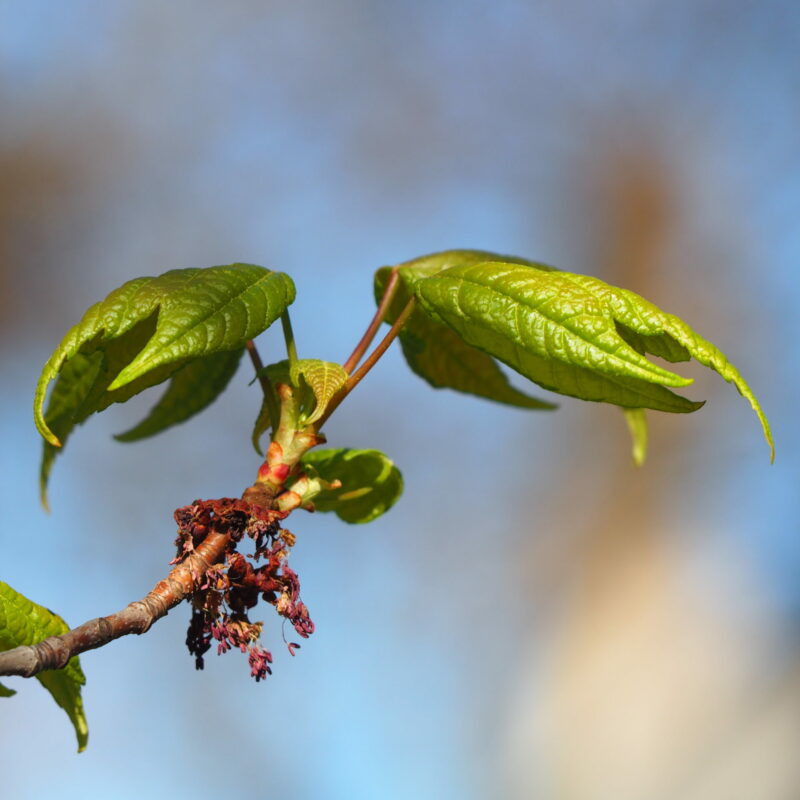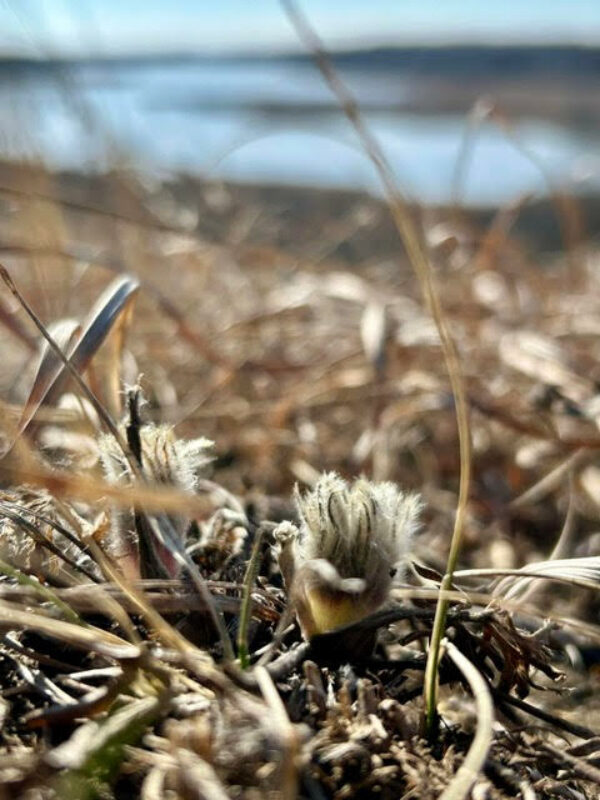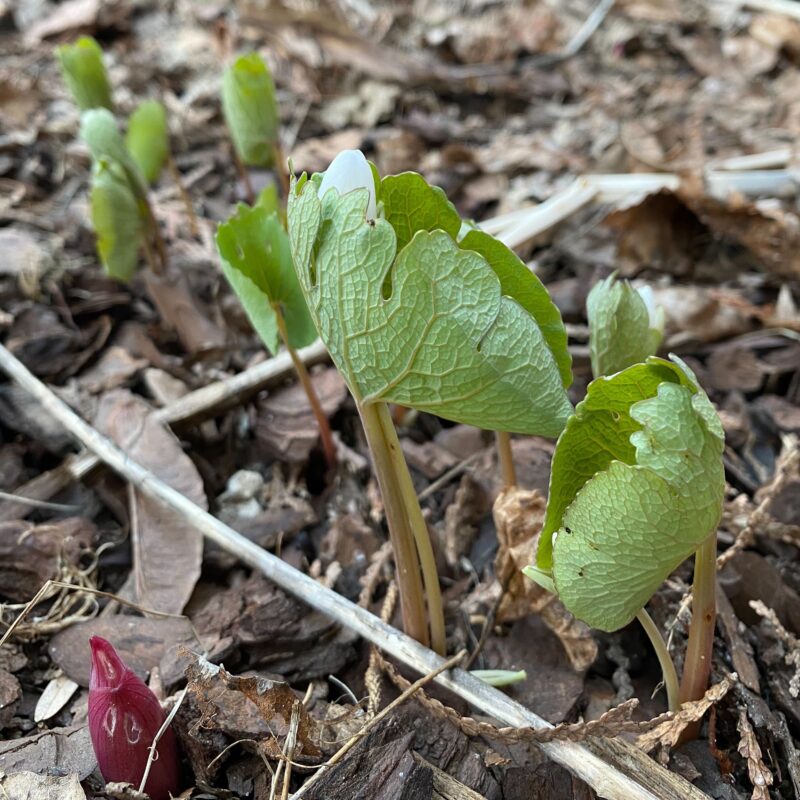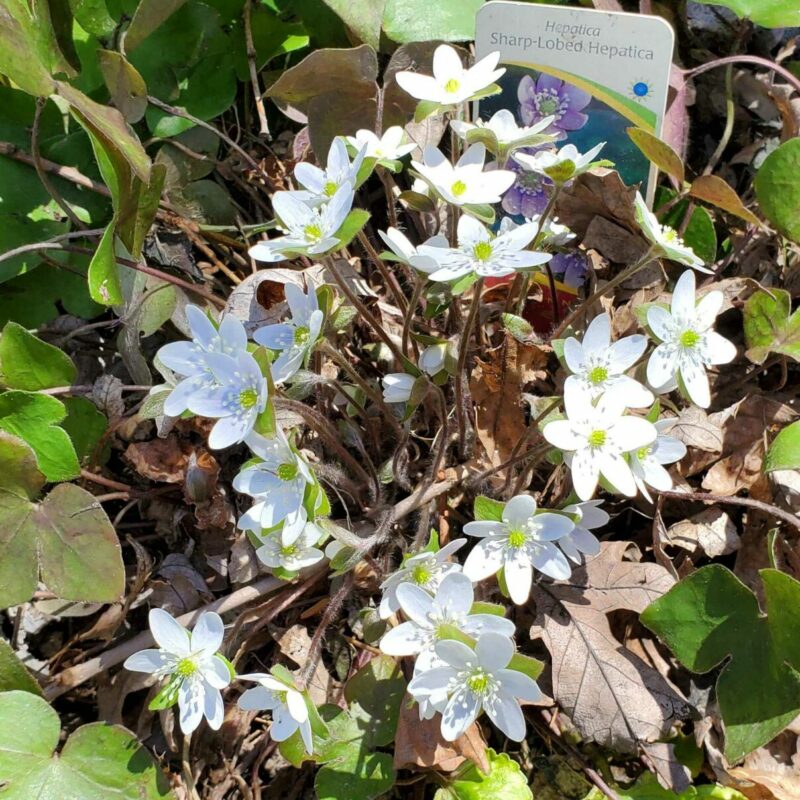
After a dry and mild winter, Minnesota is ushering in an early spring. By mid-March in the Twin Cities, fuzzy catkins already emerged from pussy willows and buds formed on maple trees, and robins have been hopping about in parks and yards. Sprinkle some late March snow on top, and the strangeness of this unprecedented season has left many feeling unsettled. What do warming winters and early springs mean for the native habitat that supports our pollinators?
Changing Cues
Plants and animals alike rely on external cues for when to start spring activity. By sensing seasonal changes in daylight and temperature, plants know when to sprout from the ground and deciduous trees can time when to grow back their leaves.
Scientists call the seasonal timing of biological activity “phenology.” Humans have long tracked the cyclic patterns of life around them for survival and sustenance. As the climate changes, shifts in the timing of cues like temperature and precipitation cause plants and animals to do things earlier (and sometimes later) than we are used to. This presents challenges for ecosystem health. For example, early sprouting and leaf-out times this year increased risk of plant damage when freezing temperatures returned later in the winter.
Tracking the Changes
Because all species don’t respond to changing climate patterns in the same way, interactions between plants and pollinators can fall out of sync with one another. While still an area of active research, mismatches between flower blooming times and when overwintering pollinators emerge can lead to a lack of food for insects and missed pollination opportunities for plants.

This might be especially true for specialist pollinators that rely on specific plant species for nourishment. For example, spring ephemerals, such as trout lilies, trillium, and Virginia bluebells are an important source of pollen and nectar for early-arriving pollinators. But if these flowers bloom earlier than usual, they might miss the window of time when their main pollinators are active.
We’re still learning how different plant-pollinator interactions will shift with climate change, but we can all help by recording our observations. You can keep track of seasonal changes in plants and wildlife by making your own phenology notebook or tapping into a community science program like the National Phenology Network or Budburst. Collecting data on what’s happening, and when, helps scientists better understand timing changes in plants and animals, and the effects those changes have on ecosystems.
Let the Plants Guide You
Native plants are resilient to extremes. Still, limited snowfall and precipitation makes it harder for plants to thrive, especially as we potentially enter a third year of drought in Minnesota. Continued drought and warmer winters here are a challenge for everyone. We’re all figuring it out! When it comes to ensuring that our native habitat remains supportive for pollinators and wildlife, let’s learn from each other and stay open to new ideas and strategies.
Here’s some planting advice from Blue Thumb partners that have been navigating the shift to an early spring:
Metro Blooms and Metro Blooms Design+Build (Twin Cities)
First, be patient. Hold off on any major planting activity until soil temperatures rise to 50 degrees. (Or when you start to see dandelions flower.) Invasive species removal, pruning, and native seed sowing can be great alternative winter activities in the meantime.
Second, water wisely. Hold off until mid-to-late April to water.* You can add a light layer of natural straw seeding mulch to retain moisture for any winter-sown seeds to germinate. When ready to water, look for signs of spring growth. If you don’t see any green popping up from the ground, don’t water. Dormant, overwintering plants do not need supplemental watering, especially when the ground is frozen. If you’re starting to see some active growth, stick your finger in the soil. If the soil is moist and cool a few inches down, don’t water. If the soil is dry, you can give your plants a watering. Check back after at least a week and water again only if the soil has dried out.
*Except for deep watering of evergreens and new trees/shrubs, which you can start now.

Nick Voss, Education and Outreach Coordinator with Vadnais Lake Area Water Management Organization (Northeast Metro)
Try to plant in clumps to buffer the possibility of losing a few. For new plantings, stick to the basics: Choose plants that prefer your soil type or have a reputation for handling tough conditions, use mulch to hold moisture in, and water every few days but don’t overdo it. Change course based on what you observe (feel the subsurface, see what the plant is doing), not by the assumption that you should compensate for a hot day. Overall, let native plants be their rugged selves!
Gene Stark, Owner, Glacial Ridge Growers (West Central Minnesota)
Native plants are very resilient, and there are many drought-resistant natives that will do well with some watering to get them started. It is good to record what happens this season, since it may be one in a long cycle, so others may find this information very useful for the future.

Alex Blondeau, Owner, Windflower Natives (West Central Minnesota)
I know that everyone’s minds naturally turn to planting in the spring, but the unpredictable weather we have been experiencing makes spring planting risky. My advice to folks is to seriously consider fall planting. The cooling temps and higher soil moisture are great for young plants to get themselves well established and ready to flourish come spring. The second half of September through the first half of October can be prime times. The only risk with later plantings is that they won’t have enough time to get well rooted in their surroundings and pop out of the ground from the freeze/thaw cycles. A quick check in the spring, and pressing plants back into the earth, is usually enough to deal with such an event.
Bob Dahm (Organic Bob), Organic Lawns by LUNSETH
Adequate mulch around plants will keep roots cool and hold moisture in the soil. Incorporating compost into soil for any project will provide beneficial microbes and organic matter. Inoculating planting and seeding projects with mycorrhizae (a fungi-based soil amendment) also helps projects germinate and get established.
A good practice is to observe plants daily, looking for signs of wilting, and watering heavily if you see signs of stress. For seeding projects, be sure to check germination codes on native seeds. Many do best through dormant seeding in late October or in November. Spring is rarely a good time to seed.
Looking for more native planting tips? Check out the free Resilient Yards Online Learning Series, or sign up for a live workshop this April and May at bluethumb.org/events.
– Megan Reich, Metro Blooms Communications and Program Manager
